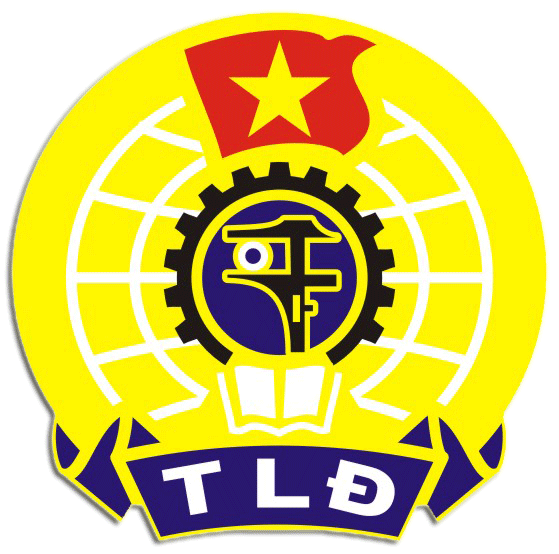- Giới thiệu
- Tra cứu điểm
- Mẫu biểu
- Giáo trình - Tài liệu
- Nhiệm vụ công tác trọng tâm
- Tuyển sinh
- Bài giảng và tài liệu tham khảo
- Ngân hàng câu hỏi và giới hạn ôn thi
- Giải đáp thắc mắc
- Ngoại khóa
- Công tác giáo viên chủ nhiệm
- Khen thưởng - Kỷ luật
- Cơ sở vật chất
- Thư viện ảnh/video
- Kỹ năng sống
- Văn bản pháp luật
Nội dung Xemina khoa học bằng tiếng Anh - Lần 1 (tháng 9/2019) Báo cáo:Cô Nguyễn Thị Vân, Cô Trương Thị Thùy Liên
SMART UNIVERSITY AND POLICY RECOMMENDATIONS FOR DEVELOPING SMART UNIVESITIES IN VIETNAM IN THE INDUSTRIAL REVOLUTION 4.0
Nguyễn Thị Vân, TNUT
In interaction with globalization, the Industrial Revolution 4.0 will have a strong impact on Vietnam, creating many opportunities and challenges for the development of education and training in the country. Addressing such rapid change, studying the effects of this revolution on higher education in Vietnam and proposing models for higher education development to meet current development requirements is critical and scientifically meaningful. Based on the research’s analyses, the paper proposed policy recommendations for developing smart university model in Vietnam.
- 1. Smart university
The development of “smart university” concepts began just a few years ago. We notice that a commonly accepted definition is lacking in the literature. This can be explained by the apparent novelty of the concept and various types of intelligent systems, technologies and devices available to students, learners, teachers and academic institutions.
As we are living in age of international integration, where world economy is transforming to knowledge-based economy, universities are forced also to change way of their functioning. It is important for modern universities to be not only education centers but mainly the successfully prospering organizations-based-on-knowledge. Implementing a comprehensive and intelligent solution within a university and providing educational services, which are personalized to the needs of the market, will allow universities to reach a type of institution called “smart”.
The key in the property of being “smart” is the ability to interact with the environment and adapt to it. This property has an independent meaning and can be applied to categories such as city, university, society and many others. Forty years ago, when the property was devised, the level of technology development did not allow for the property in question to exist in most systems or processes. However, recent advances in information and communications technology (ICT) have helped build extremely complex systems, such as smart city.
A smart university is regarded as part of a smart city. Coccoli, Guercio, Maresca, and Stanganelli (2014)defines a smart university as a platform that acquires and delivers foundational data to drive the analysis and improvement of the teaching and learning environment by retrieving sensor-data, and using linked (open) data and formalized teaching knowledge believes the concept of the smart university can be defined as a usual globalization in which objects are networked and sensors are enabled to work together in a collaborative manner to provide a qualified smart university infrastructure. Other experts contend a smart university is an institution where the integration of technological innovations and the Internet can provide a new quality of educational and scientific processes, the results of training, scientific, innovation, educational, social and other activities, whereas some argue the smart university does not have a formal and broadly accepted definition; the main concept is to develop a university campus using Internet of Things (IoT) that utilizes the resources efficiently, deliver high quality services and security to the campus community, while the operational cost gets reduced.
Generally, all universities are connected to internet, and in each there are many similar objects that can be converted into smart objects within meaning of IoT. IoT is involved in everything and influence the processes in a university, helping to improve them regarding the decision-making, technological development, and support in academic learning. To illustrate, the university campus may consist of simple common objects like doors, windows, printers, projectors, books, poles, benches etc. or complex objects like buildings, classrooms, laboratories and parking etc. All these objects can be converted into smart objects by attaching sensors, QR tags (texts, links, graphics), radio-frequency identification (RFID), Near-Field Communications (NFC) and these objects are given a significant level of intelligence to allow operation of actuators and even decision making. The set of all these smart objects can transform a classical campus, into a smart campus.
Smart university includes Smart Campus, Smart People, Smart Education, Smart Research, Smart Governance, Smart Influence. Accordingly, Smart Campus is one of important dimension with unavoidable features such as safe and secure settings, network connectivity, innovative learning environments, functional spaces, infrastructure interoperability. Regardless of the merit of technological approach, we observe that technology is just one among the many variables to take into account. Primary focus of smart universities is in the education area, but they also drive the change in other aspects such as management, safety, and environmental protection. The availability of newer and newer technology reflects on how the relevant processes should be performed in the current fast changing digital era. This leads to the adoption of a variety of smart solutions in university environments to enhance the quality of life and to improve the performances of both teachers and students. According to, preparing a specialist who has professional skills and habits in a smart society is a task for the smart university. This is a university where the use of a complex (set) of technological innovations and the Internet by trained people leads to a new, appropriate intelligent society, to improvements in the quality of educational, scientific and research, commercial, social processes as well as other activities.
While other works address only technological solutions, Owoc and Marciniak (2013) describes a smart university as composed of five entities: smart people, smart building, smart environment, smart governance, and a knowledge grid. In order for the university to achieve the type of smart, it must be managed in an intelligent way. It means, the authorities during making decision have to include all five university contractual determinants: human and social capital (called smart people), available physical infrastructure (called smart building), an integrated information infrastructure (called knowledge grid), strategic decision-making processes (called smart governance) and aspects related to the protection of the environment (called smart environment). In addition, smart university should maintain: complex interaction, including intelligent management of resources, equipment and utilities, allowing to specify the location of objects in real time using ICT infrastructure; full integration, assuming that the basic scheme of the system infrastructure supporting university heterogeneous data are fully integrated together; encouragement for innovation, covering all activities of the university intended mainly for its interior and exterior public institutions in order to spread the use of its new technology as a way to ensure the development of their own; and collaborative operation, based on intelligent infrastructure, critical systems and cooperating users - staff of the university, both administrative and academic, which will help to improve the efficiency of the university.
Smart university is a new concept for a university to integrate ICT into its management, teaching and learning, research and other activities. Driven by the trend of development and the Industrial Revolution 4.0, becoming a smart university in an open education is critical to the development of any higher education institution in Vietnam and worldwide. This model does not include only the “smartening up” the management and facilities but also the linkages among universities and educational systems towards a society of autonomous learning all the time everywhere. However, it should be cautious to differentiate a smart university from a normal e-learning institution. In fact, smart university is the broader concept of Massive Open Online Courses (MOOCs) as it focuses on smarting the entire university.
In short, we shall refer to a smart university as a university which enhances the education, research, and work processes and experiences of stakeholders by incorporating digital, innovative, and internet-based technologies to improve their performance and to enhance the quality of their graduates. Such smart universities act in the context of smart cities, which offer smart services and applications to their citizens to enhance their quality of life.
2. Policy recommendations for developing smart universities in Vietnam
Based on the analysis of the challenges encountered by Vietnamese higher education institutions and the concept of a smart university, this study proposes a number of policy recommendations in order to promote the construction of smart universities in Vietnam.
3.1. Digitize an entire university
This is a prerequisite and the first strategic step in building a smart university. Digitisation not only applies to study materials, or lectures but almost everything, including management, teaching methods, services or utilities.
3.2. Change the purposes and methods of education
Traditional educational methods aimed to provide human sources for jobs. However, Smart University, especially Smart Education, will focus on promoting creation and entrepreneurship. These missions motivate universities to change their training methods and teaching content accordingly.
3.3. Increase the practices in training and integration
Universities can establish their own companies directly under the government of the school and treat them as independent enterprises. This model will bring to the university many benefits such as (1) Creating internship and practice opportunities for students; (2) Create a more financial resource for universities; (3) Reduce the university's dependence on other partners.
3.4. Enhancing the connection and cooperation between universities, sharing infrastructure and learning materials
In developing countries, infrastructure and learning materials are very inadequate due to limited financial resources. Therefore, the cooperation and sharing of resources among universities are crucial to improve the quality of education and training, especially machinery and equipment for learning and research. For example, in Germany, all universities have used the same internet connection. One student account can access internet connectivity in all German University. Students of this school have access to another school's online library. This sharing is particularly important for the biology, chemistry, materials, industrial engineering subjects that need more sophisticated and modern equipment in the learning and research process.
3.5. Personalised education
This is one of the most important and strategic steps of building a Smart University. Instead of studying on a regular schedule, Smart University aims to personalise education. Accordingly, each student will choose a different educational method, different subjects or different content which are best suited for themselves. Personalising education will help students choose the way of education that best meets their abilities and interests, thereby maximising their own capacity.
3.6. Promote interdisciplinary and cross-disciplinary training and research
Previously, research and training focused on specific areas and tended to focus on intensive issues. However, at the current, humanity is having to deal with numerous global issues, requiring understanding and coordination among many industries to solve (for example, the problem of climate change). Therefore, interdisciplinary and transdisciplinary education is the predetermined direction. Smart University will promote and support interdisciplinary collaboration in research and teaching.
Overall, Smart University is an indispensable way to develop education in a comprehensive and sustainable way in the Industry 4.0 era. To be able to build Smart University successfully, we need a comprehensive investment in specific policies, human and resources. The suggestions in this study will be useful lessons for the Government of Vietnam in particular and developing countries in general in order to build a prosperous Smart University.
Cô: Trương Thị Thùy Liên
WHAT IS CLIMATE CHANGE? MEASURES TO REMOVE
CLIMATE CHANGE IN VIETNAM
What is Climate Change?
Climate change is the change occurring in physical or biological environment. This situation causes significant adverse effects on the composition, resilience or reproduction of natural ecosystems, economic activities, human health and social life.
Reason
Objective causes include: Natural changes from changes in the Earth's orbit, the activity of the sun, changes in the position and size of continents, changes in ocean currents and internal circulation of the atmospheric system.
Subjective causes related to human impacts. This is due to land use, water resources and an increase in carbon and greenhouse gas emissions from human activities.
Expression
The weather is becoming more and more severe: The global climate change makes the weather also change in extremes and increasingly harsh. The forecast of the IPCC Intergovernmental Panel on Climate Change indicates that: The world will still have to receive the extreme events of more severe weather.
Sea level rise: Global warming also affects the temperature of the sea. Sea water is gradually warming, even the deepest waters.
Glacial melting and Greenland: In recent years, the Arctic sea has heated twice as fast as the global average, the area of the Arctic sea is covered by ice every summer. are shrinking.
Temperature is constantly changing: Each year the average temperature is higher than the previous year. In the 21st century, the global average temperature above ground and sea level has increased by about 0.74oC.
The concentration of carbon dioxide in the atmosphere is increasing.
Climate change remedies in Vietnam
The process of industrialization increases emissions quickly into the atmosphere. It is followed by the situation of atmospheric change, greenhouse effect, global warming, drought, rising sea ... Therefore, in order to reduce the impact of climate change, please take the following measures:
Updated information on climate change
Each person should consult and learn about national and local policies and plans to cope with climate change in the mass media. Thanks to that, there are more bases and motivations to persuade others to do well together to minimize climate change.
Limit the use of fossil fuels
Fossil fuels include: Coal, burning oil, natural gas. These types when used are the cause of the greenhouse effect. However, at present there is no measure that can replace this source of fuel. Therefore, to prevent climate change, it is best to limit the use of fossil fuels, before humans find an alternative fuel source.
Reduce consumption
Reducing consumption is not only a saving for spending but also a solution to climate change. Because, this helps reduce greenhouse gas emissions that cause climate change, natural phenomena abnormal.
For example, using many types of packaging, especially those made from plastics, will cause white pollution effects ...
Add vegetables and fruits in the diet
Eating too much meat is not good for the body. Therefore, the need to add vegetables and fruits into the diet. From an environmental protection perspective, the livestock industry emits the atmosphere of many gases causing the largest greenhouse effect. This is the cause of climate change.
-
18, Tháng 5, 2022
-
14, Tháng 5, 2022
-
10, Tháng 5, 2022
-
5, Tháng 5, 2022
-
30, Tháng 4, 2022
-
10, Tháng 5, 2022
-
30, Tháng 4, 2022
-
5, Tháng 5, 2022
-
18, Tháng 5, 2022
-
14, Tháng 5, 2022








